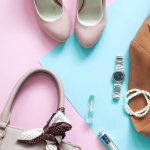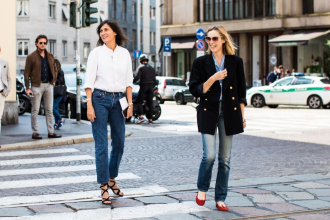If you’ve ever stood in front of your closet thinking, “I have nothing to wear,” you’re not alone. Defining your personal style is the key to dressing with confidence, consistency, and joy. Instead of chasing every trend, you can curate a wardrobe that truly reflects you. Here’s how to do it, step by step.
1: Get Inspired — But Selectively
Start by gathering visual inspiration. Pinterest, fashion blogs, and Instagram are great places to start — but be intentional. Instead of pinning everything that looks nice, focus on images that you could actually see yourself wearing.
Try This:
- Create a “Style Moodboard” with 20–30 images.
- Look for common elements: Are you drawn to relaxed tailoring? Feminine silhouettes? Monochrome palettes?
2: Audit Your Closet
Before you define where you’re going, understand where you are. Go through your current wardrobe and ask yourself:
- What are my most worn pieces?
- What outfits make me feel confident?
- Which items never get touched — and why?
You’ll start to spot patterns in fabric, fit, and form that work (or don’t work) for you.
3: Identify Your Lifestyle Needs
Personal style isn’t just about aesthetics — it’s about function. Think about how you live:
- Do you work in a creative office or a corporate one?
- Are you often on the go, or do you love dressing up?
Your wardrobe should support your daily life — not fight it.
4: Define Your Style Words
Now that you’ve looked inward and outward, it’s time to name your style. Choose 3–5 words that describe the vibe you’re going for.
Examples:
- Effortless, neutral, tailored
- Romantic, feminine, vintage-inspired
- Edgy, minimalist, bold
These words act as a filter when shopping and styling.
5: Build a Color Palette
A personal color palette makes mixing and matching easier. Look at your favorite pieces and moodboard — what colors show up most?
Tip:
Pick 3–4 base neutrals (e.g., black, white, camel, navy) and 2–3 accent colors that express your personality.
6: Try a Uniform or Outfit Formula
A “uniform” doesn’t mean boring — it’s a reliable formula that works for you.
Examples:
- Blazer + T-shirt + jeans + loafers
- Midi dress + boots + statement earrings
- Turtleneck + wide-leg trousers + belt
Once you find your go-to combo, you’ll save time and always feel put together.
7: Shop with Purpose
Now that you have clarity, be intentional with what you buy. Ask before every purchase:
- Does it align with my style words and color palette?
- Can I wear it three different ways?
- Does it fit me, not just the model?
Avoid impulse buys and start building a wardrobe with longevity.
8: Revisit and Refine Over Time
Your personal style will evolve — and that’s a good thing. Every few months, revisit your moodboard and wardrobe to reflect where you are in life. Let your style grow with you.
Final Thought: Your Style, Your Signature
Defining your personal style isn’t about fitting into a mold — it’s about expressing who you are without saying a word. When your clothes reflect your true self, getting dressed becomes an act of joy, not stress.






